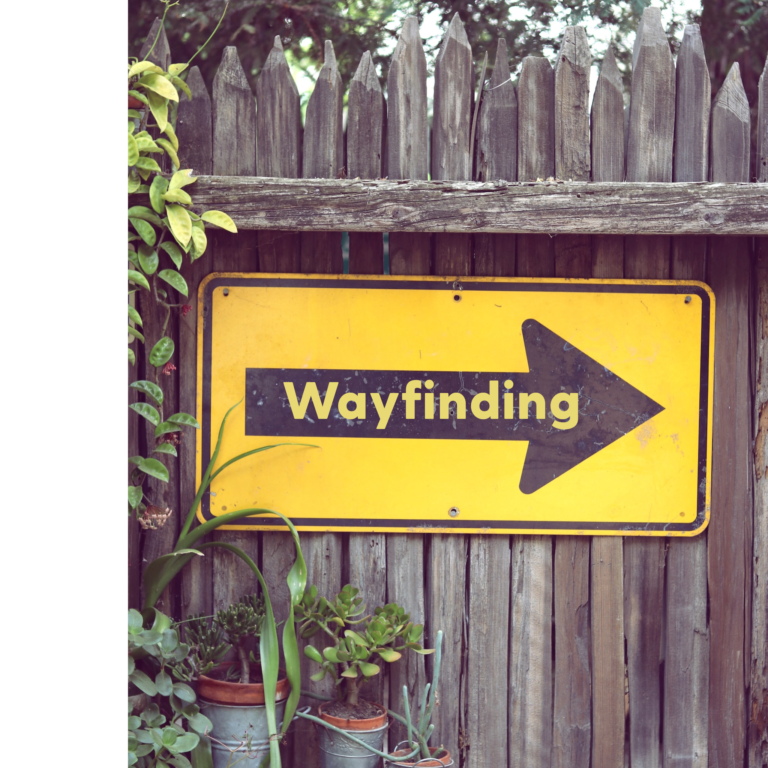5 Basic Wayfinding Techniques in Dementia Care

Wayfinding techniques
Wayfinding techniques create a friendly and familiar environment that aids in navigating through it. We use wayfinding in our everyday lives. Think of a time you followed a sign to the restroom in a public place. They probably also used an arrow to help you navigate. This is wayfinding. It is especially important when the individual requires dementia care because navigating physical spaces can be more challenging. In this blog we will review 5 basic techniques you can implement to improve wayfinding and create a supportive environment for your loved one.
1. Clear Signage
A fundamental step in aiding wayfinding is to use clear signs with bold colors and large, easy-to-read fonts. If your loved one has forgotten how to locate the restroom or their bedroom in their own home, try using a simple sign with a bold arrow pointing in the right direction, labeled “bathroom” or “Julie’s bedroom”. You can also print a simple photo of a toilet and place it on the bathroom door, or place a photo of your loved one with their name on the bedroom door. They will better identify with photos from when they were younger. These techniques are effective in creating a dementia-friendly environment.
2. Proper Lighting
Adequate lighting is necessary in any environment, but even more so in dementia care environments. When possible, utilize natural light in the home because this improves visibility, and it can elevate mood. Make sure there is plenty of lighting in the home during seasons when it gets dark early. A well-lit environment improves visibility enhancing navigation, reduces shadows, and in turn, decreases confusion.
3. Safe Rummaging
If your loved one enjoys going through desk drawers or kitchen drawers, it’s beneficial to create a safe and inviting place for rummaging. Use a safety lock on cabinets and drawers that may pose safety concerns. Identify a drawer that can be dedicated to your loved one and fill it with familiar items such as photos of when they were younger, and tactile stimulating items such as squishy balls. Leave the drawer slightly open so it’s a visual invitation to look into it. Create an activity box to leave in a visible area, such as the kitchen table.
4. Clutter Free Environment
Have you ever been in a store that was packed with items from the floor to the ceiling? It was probably difficult to take everything in and navigate through it. Creating a clutter free environment that doesn’t feel overwhelming is important in dementia care. The less items, the better. Place single photos on tables and on the walls. This will create a sense of familiarity without being overwhelmed.
5. Reduce Elopement Risks
Leave doors open to rooms that your loved one can access. Close doors, such as the entrance to the garage or basement, if these are rooms that could pose a safety concern. If your loved one opens doors that could be unsafe, try disguising them by painting the wall, door and door knob the same color, or using wallpaper on the door to mask it. Many memory care facilities will disguise doors with wallpaper that looks like a bookshelf.
Conclusion
Dementia care with effective wayfinding techniques play a pivotal role in reducing stress and creating a friendly, supportive environment. By using these 5 basic techniques, you can create an environment where your loved one will be able to navigate with greater independence and confidence. If you need personalized dementia care solutions to support your loved one aging in place, please connect with us. We always provide a free initial phone consultation and are ready to help.
